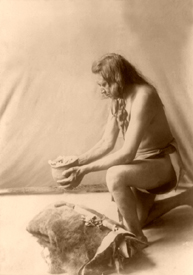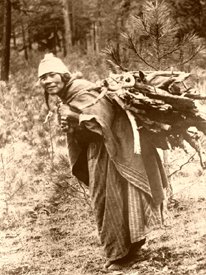
The healing traditions of Native Americans go back for thousands of years, as the many indigenous tribes of North America learned that by mixing herbs, roots, and other natural plants, that they could heal various medical problems. But, remedies were not the only part of the Native American healing process.
With more than 2,000 tribes of indigenous people in North America, the healing practices varied widely from tribe to tribe, involving various rituals, ceremonies, and a diverse wealth of healing knowledge. While there were no absolute standards of healing, most tribes believed that health was an expression of the spirit and a continual process of staying strong spiritually, mentally, and physically. This strength, as well as keeping in harmony with themselves, those around them, their natural environment, and Creator, would keep away illness and harm. Each person was responsible for his or her own health and all thoughts and actions had consequences, including illness, disability, bad luck, or trauma. Only when harmony was set right, could their health be restored.

The herbs and other natural products used in remedies, were generally gathered from their surrounding environment, resulting in a wide variety of cures. However, sometimes items that were unavailable locally were traded over long distances. Herbs and medicinal plants were often seen as deeply sacred.
Many of the various practices have been passed down orally from generation to generation and never documented in writing, which leaves many of the healing remedies a mystery. Only rarely did the healers, such as the Cherokee, who developed a written language, put their formulas or practices in writing.

When early Europeans arrived in the United States more than 500 years ago, they were surprised to see Native Americans recovering from illnesses and injuries that they considered fatal. In many ways, the Indians' herbal remedies were far superior to those known to the new immigrants. But, for the Native Americans, they had no remedies for the "diseases of civilization," or white man's diseases, such as measles and small pox, which would wipe out thousands of them over the next few centuries. Not only lost were these many Native Americans, but also, bodies of knowledge that went to the grave with healers.
Spirituality and Connection:
The major difference between Native American healing and conventional medicine, both in the past and present, is the role of spirituality in the healing process. Native Americansbelieve that all things in nature are connected and that spirits can promote health or cause illness. Therefore, it is necessary to heal not only the physical parts of an individual, but also their emotional wellness, and their harmony with their community and the environment around them. In addition to herbal remedies, the community often came together to help an ill person in ceremonies, dances, praying, and chanting.
Today, modern medicine focuses only on science and the mechanistic view of the body, while many Native Americans continue to include the spirit as an inseparable element of healing.

Referred to as healers, Medicine Men, or Medicine Women by their tribes, they have also been called “Shamans” by people of European descent, though this term was not used by the Native Americans. These many healers' primary role was to secure the help of the spirit world, especially the “Creator” or “Great Spirit,” for the benefit of the community or an individual.
The Medicine Man was also a priest in addition to being a doctor. Believing that disease could be caused by human, supernatural, or natural causes, the healer was equipped to treat illness in any of these categories. Masks, which were often grotesque and hideous, were worn by healers to frighten away the spirit causing the disease or pain. Beating drums and shaking rattles while dancing around the patient were also used to exorcise the demons. The Medicine Man combined rights of exorcism with other practical procedures, using plant and animal substances. In addition to herbal remedies, suction tubes or cups were also used by many healers, as well as purging and purification.

Healers kept their remedies and tools in a medicine bundle, made from cloth or hide that was tied securely. There were several types of bundles – the healer's personal bundles, the tribe's, and bundles utilized for special purposes, such as festivals and ceremonies. The contents of each medicine bundle are sacred and asking about the contents of a personal bundle was generally forbidden. Medicine bundles belonging to tribes were sometimes called "grandmothers," because of the power they held to nourish and nurture the group. One tool often found in medicine bundles are medicine pipes, that represent the ebb and flow of life. It is believed that the exhaled smoke carries prayers up to the Great Spirit.
No comments:
Post a Comment